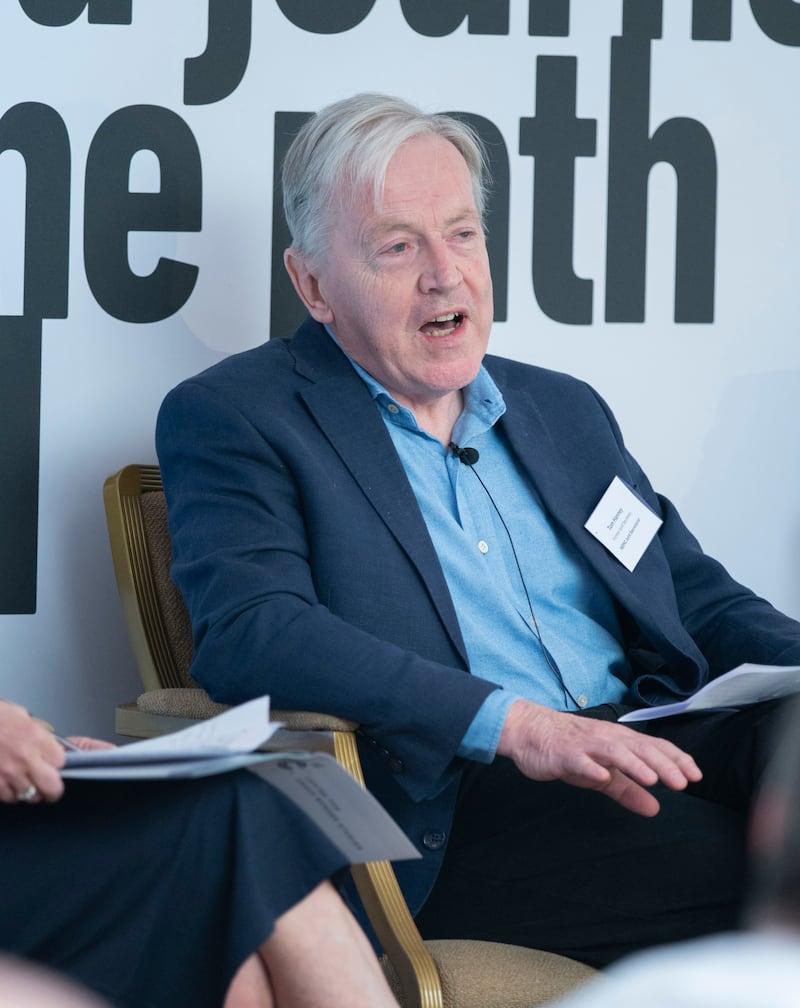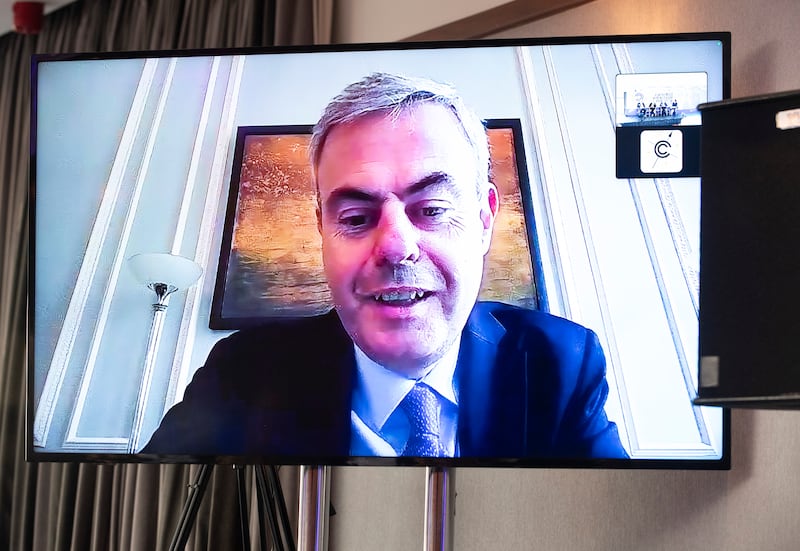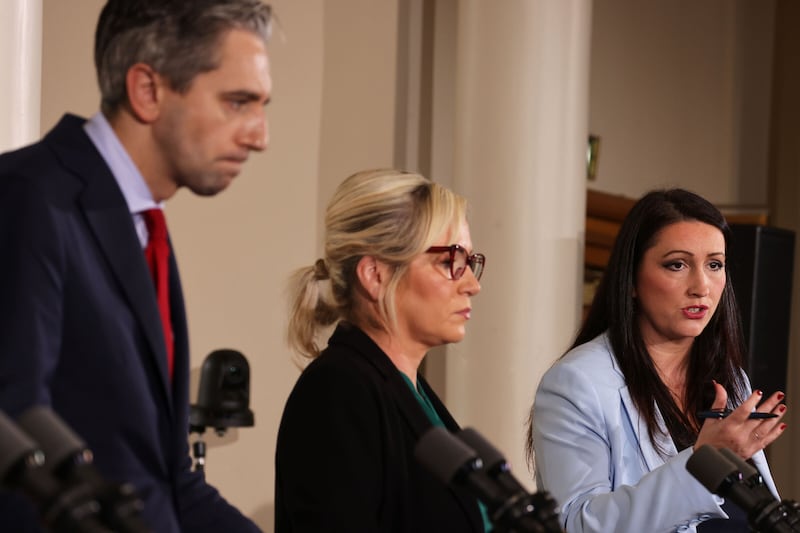During a long career in diplomacy, which ended as Ireland’s permanent representative to the European Union, Tom Hanney learned many lessons, the first and last of which was patience.
In an earlier stage of his career, Hanney enjoyed the rank of joint secretary (South) of the North-South Ministerial Council, working in Armagh alongside his Northern colleague, Mary Bunting.
Speaking last week at a conference to mark the 25th anniversary of the Centre for Cross Border Studies – now to be renamed the Centre for Cross Border Co-Operation – Hanney remembered the challenges.
“When I went in, issues like Narrow Water Bridge, the Ulster Canal, the A5 Road, were all under active discussion. They’re still under active discussion, even though now there have been considerable advances,” he said.
READ MORE
The Belfast Agreement laid down that co-operation would take place on 12 fronts, a far cry from the original proposal put forward by Dublin, and accepted by London, that there would be 40 such bodies, each with executive powers.
In six areas – agriculture, education, environment, health, transport and tourism – co-operation is taken forward by Government departments and Ministers in both Dublin and Stormont working together.
In six other areas, co-operation happens through North-South implementation bodies, notably Waterways Ireland, which looks after inland waterways, Safefood, which leads on food safety matters, and InterTrade Ireland, which promotes cross-Border trade.
In addition, there is the Special EU Programmes Body, which delivered EU Peace and Interreg Programmes, two language bodies, Foras na Gaeilge and the Ulster-Scots Agency, and the Loughs Agency, which manages Lough Foyle and Carlingford Lough.
Finally, there is the all-island tourism promotion body, Tourism Ireland, which has almost identical oversight and governance arrangements to the other North/South bodies, but is set up as a limited company.

Today, the prospects for more co-operation are evident, especially if the subject can be kept to practical work benefiting everybody, shorn of involvement in a constitutional debate about the future of the island.
Set up in 1999, the North-South Ministerial Council is a product of the Belfast Agreement, though it was not itself set up until more than a year and a half after the historic deal was agreed in Stormont.
Throughout its life, the organisation – known in diplomatic shorthand as “the NSMC” – has often struggled to operate in the face of Stormont suspensions, or unionist caution – firstly by the Ulster Unionists, and, more latterly, the Democratic Unionist Party.
Today, Bunting believes the NSMC must become flexible: “There’s a need to move away from a lot of the bureaucracy associated with it and allow it to become a proper forum for discussion, Minister to Minister.
“When Ministers get together, they do talk to one another, and they do work as politicians. But to run NSMC meetings, the amount of paperwork and nonsense that goes on – I can say that now, sorry – is incredible, it really is incredible.”
Before one plenary meeting of ministers in Armagh, she had prepared detailed speaking notes for first minister Ian Paisley that were so detailed that they were “down to saying, 10 minutes for this, five minutes for that, so on, so on.
“Dr Paisley was reading through, and he says, ‘What cheeky civil servant has said that I could only talk for 5 minutes on this?’. Suddenly, it dawned on me that, how ridiculous that all was.
“That still goes on. We have to let the politicians talk openly and freely to one another. And whether we like it or not, they’re the ones that have got to agree, and they’re the ones that have to make the change,” said Bunting.
Hanney agrees: “It takes an enormous amount of time and energy to move things forward, even quite slowly. I sometimes think it would be quicker to build a Great Wall of China than to build a bridge between North and South.”
“In some ways, the politicians got on easier than we civil servants. We were always so conscious of potential mistakes, fault lines. But when the politicians were in the room, pragmatism tended to dominate,” he said.
Different cultures in the systems of bureaucracy were evident, too: “The Northern Civil Service, to me, always seemed better organised. They examined issues more thoroughly. They were more practical.
“Whereas in the South, we were a lot less formal, but we were more flexible. So, you tended to learn from one another,” said Hanney, who noted the different political masters officials on each side had to serve.
The Southern side always “wanted to rush forward”, he said: “[We] were always very keen to push as far with the agenda as possible. I was very conscious that I had, to a certain degree, to hold back on certain issues because they wouldn’t work [in Stormont].”
Now, however, politicians and diplomats believe – since Northern Ireland has no elections until 2027, barring accidents – that an opportunity exists to make progress on multiple fronts.
Former secretary to the government, Martin Fraser, who is now Ireland’s Ambassador to London, and who was deeply involved in North/South issues, believes the last two NSMC plenary meetings have been “probably the best” for 20 years.

“The agenda has moved on, whether it is about mother and baby homes and institutional abuse, [or] climate and biodiversity. We would have fought hard back in the day to have those things on the agenda, so I think things are loosening up, which is good,” he said.
However, the future challenges will be different, he said: “The island is going to be, I think, tossed around in a lot more storms in the years to come. I think the politics [is] going to have to catch up.
“Bureaucracy is going to have to unburden the politicians, and the politicians are going to have to use that freedom to deal with the issues that are ahead of us, rather than maybe the issues that we talked about in 1998 or 2006,” Fraser said.
The detailed discussion between serving and former officials, appropriately, took place at a debate hosted by the Armagh-based Centre for Cross Border Studies, which has quietly worked to increase cross-Border understanding.
Today, the centre, which celebrated its 25th anniversary in September, is embarking on the next chapter of its journey with a name change, becoming the Centre for Cross Border Co-operation.
“It more properly reflects who we are – not a ‘think tank’, rather a ‘think and do’ tank,” its director, Anthony Soares told The Irish Times, where research is used “to pursue our task” of improving relations “within and between these islands”.
The NSMC meets in a number of different formats, such as plenary sessions involving all, or most of the Ministers in Stormont and Dublin, as happened in Dublin Castle in mid-September, and that happen twice yearly.
Ministers meet directly, too, with their opposite number, the place “where the real work of the council takes place”, in the words of Richard Hill, the current Northern joint secretary of the council said.
Despite the interruptions and suspensions, “and I am not downplaying the challenges we’ve faced”, Ministers from both jurisdictions have met nearly 350 times since the body was established.
Hill’s southern colleague, joint secretary (South) Hilary Reilly pointed to agriculture to show the benefits of North/South co-operation, reflecting the fact that the industry operates across the island facing similar challenges.
Pointing to the joint battle fought against foot-and-mouth disease in 2001, she said: “As a result of the co-operation between our agriculture departments as well, the island is brucellosis free and free of other diseases.”

More recently, Dublin and Stormont co-operated to win European Union geographical recognition status for grass-fed Irish beef from across the island, putting it “on the same level as Parma ham or Irish whiskey”, she said.
Equally, Dublin and Stormont co-operated, too, to set up the Middletown Centre for Autism in Middletown in Co Armagh, which was established in 2007 and now offers care to children across the island.
Meanwhile, the restoration of the Ulster Canal – a project spoken about along the Border for generations – is progressing, if slowly, following the opening of a 1.5km stretch between Clonfad and Clones in Co Monaghan.
The project is expected to be finished by 2029 at a cost of €80 million with the restoration of the 10km stretch between Clonfad and Castle Saunderson, thus linking Clones by water to Lough Erne and beyond.
However, Waterways Ireland has no responsibility over the now heavily-polluted Lough Neagh, which draws a tenth of its waters from streams and rivers on the Republic’s side of the Border.
However, the years of statis have left their mark. More than a quarter of a century on, and now that the Stormont institutions are back and look likely to stay, there is, many argue, a clear need for a full review of the operation of the cross-Border rules.
Staff numbers directly involved across all agencies have been frozen, or reduced, while an early pledge that every Dublin, or Stormont policy would be vetted for its impact on cross-Border co-operation disappeared in the 2006 St Andrews Agreement review.
Focusing on the positives, the Midlands-born Reilly went to talk to all the bodies involved: “When you drill down with them, and they describe in detail what they are doing, it’s clear that they are just quietly getting on with things,” she said.

















